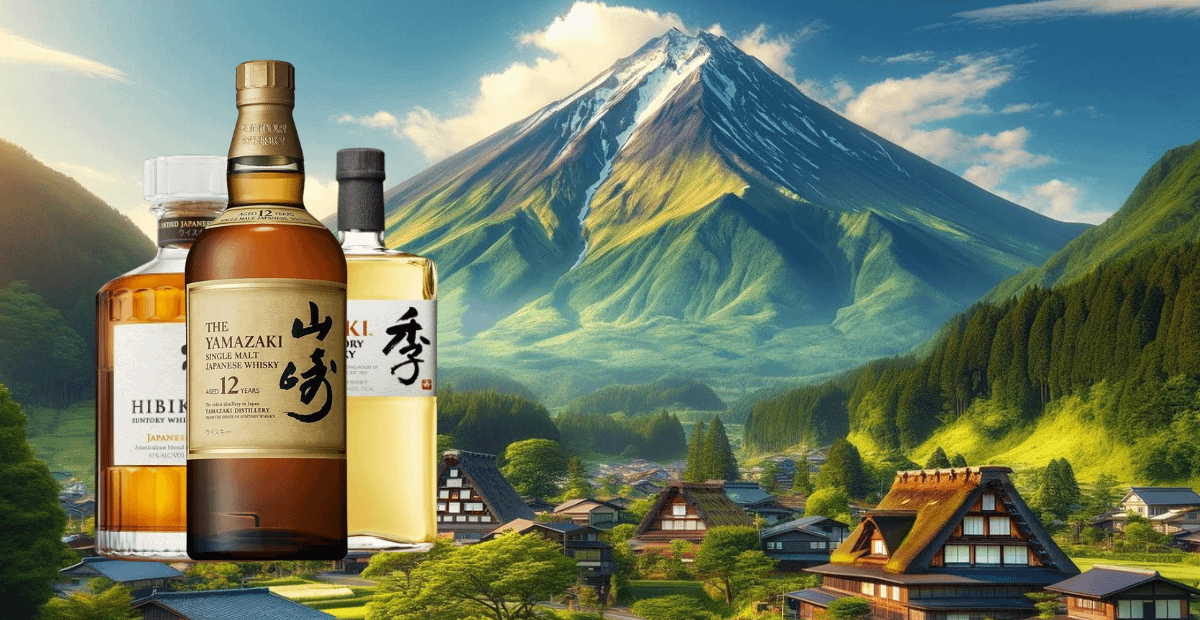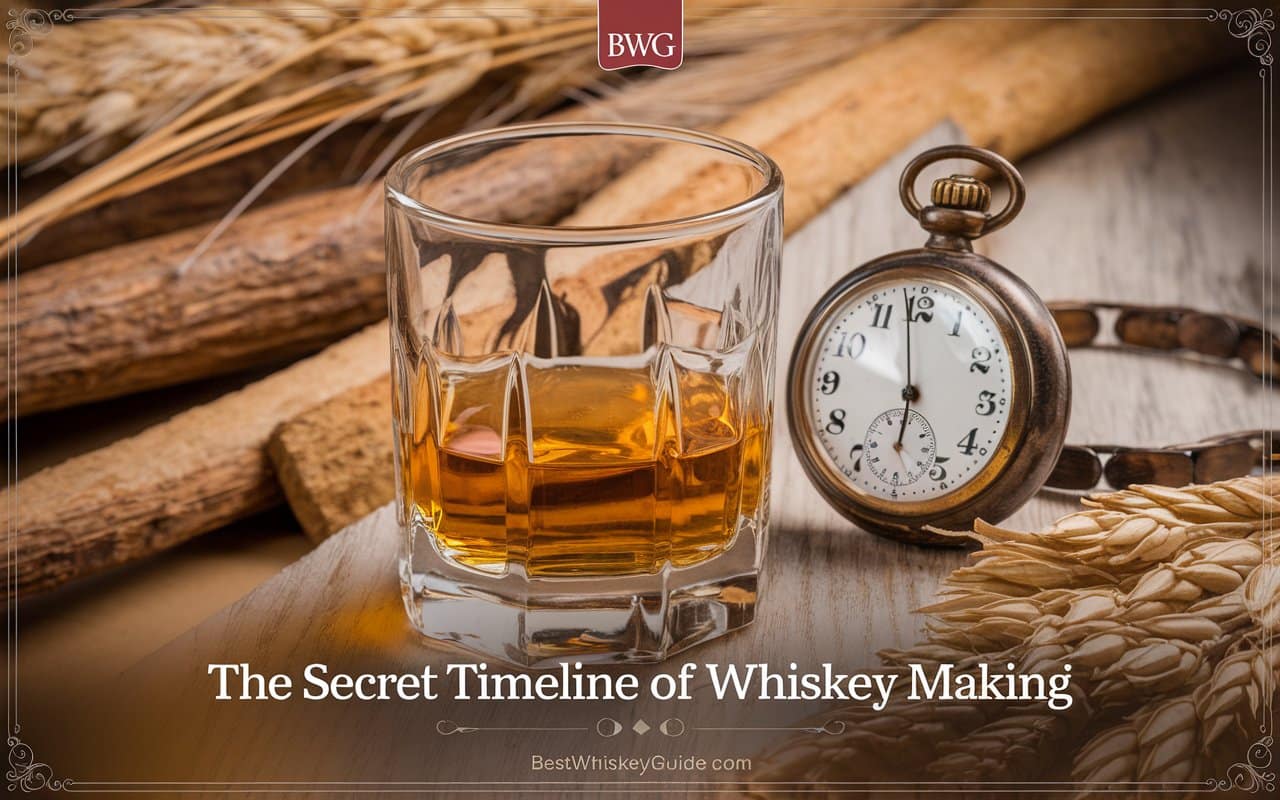Japanese Whisky Brands have garnered global acclaim for their unique flavours and meticulous craftsmanship, tracing back to the early 20th century. This article explores the rich history, major brands like Suntory and Nikka, and the diverse styles of Japanese whisky. From the influence of Scotch whisky to innovative distillation and ageing techniques, we delve into what makes these brands stand out in the world of spirits. Join us in discovering the artistry behind Japanese whisky and its rise to international fame.
Japanese Whisky Brands Table of Contents
Table of Contents
A Brief History of Japanese Whisky
The inception of Japanese whisky is a tale of cultural exchange, innovation, and passion for distillation. Inspired by Scotch whisky, the Japanese whisky industry embarked on its voyage with the founding of Suntory’s first distillery, Yamazaki, in 1923. This pivotal moment laid the groundwork for an industry that would come to be known for its meticulous craftsmanship and attention to detail.
Influenced by Scotch Whisky
The Scots’ expertise in whisky production profoundly influenced Japanese distillers, who adopted and adapted these techniques to suit their local environment. This cross-cultural pollination was instrumental in shaping the distinctive character of Japanese whisky.
Key Factors Contributing to Success
The success of Japanese whisky can be attributed to several key factors:
- High-quality ingredients: The use of pure water, superior barley, and specially selected yeast strains ensures the production of a refined spirit.
- Unique distillation methods: Japanese distilleries often employ diverse distillation techniques, including the use of various still shapes and sizes, to create a wide range of flavour profiles.
- Barrel ageing techniques: The choice of wood for barrels, including native Japanese oak (Mizunara), contributes to the whisky’s unique aroma and taste.
- Diverse flavour profiles: From light and floral to smoky and peaty, Japanese whiskies offer a broad spectrum of flavours, appealing to a wide range of palates.
Discover the history of Japanese whisky and its Scotch influences.
Major Japanese Whisky Brands
The Japanese whisky landscape is distinguished by a handful of pioneering brands that have shaped its rich history and garnered international acclaim. Among these, Suntory and Nikka stand out as monumental entities, each housing a variety of sub-brands and expressions that cater to a wide array of tastes and preferences.
Suntory (Founded in 1923)

Suntory is not just a name; it’s a legacy that marks the inception of Japanese whisky. With its establishment in 1923, Suntory introduced the world to the art of Japanese whisky-making, blending traditional Scottish techniques with distinct Japanese craftsmanship.
You can enjoy museum tours and distillery visits, but reservations are mandatory and must be made in advance. For distillery visit please click HERE.
Sub-brands:
- Yamazaki: The first distillery in Japan, renowned for its exceptional single malts that capture the essence of Japanese nature and craftsmanship.
- Hakushu: Established as Suntory’s second distillery, it is celebrated for its peated and highland-style malts, offering a refreshing alternative to the sweeter profiles of Yamazaki.
- Hibiki: A symbol of harmony, Hibiki blends are a masterful symphony of malt and grain whiskies from Suntory’s distilleries, embodying balance and complexity.
Explore the unique distillation methods and barrel ageing techniques of Suntory.
Nikka (Founded in 1934)
Nikka emerges as a beacon of innovation and quality in the Japanese whisky scene, founded by Masataka Taketsuru, known as the “Father of Japanese Whisky.”
Sub-brands:
- Yoichi: This distillery is famous for its peated and maritime malts, capturing the rugged spirit of its coastal location.
- Miyagikyo: Renowned for its floral and fruity malts, Miyagikyo represents the softer side of Nikka, offering whiskies with a more delicate and refined character.
- Taketsuru: Named after the founder, Taketsuru blended whiskies are an homage to his legacy, blending the best of Nikka’s malts in honour of his contributions.
Learn more about Yoichi’s unique peated and maritime malts.
Mars (Founded in 1949)
Though younger than its counterparts, Mars Distillery has quickly established itself as a notable player in the Japanese whisky domain, known for its adventurous and well-balanced expressions.
Sub-brands:
- Shinshu: Mars’s flagship distillery, Shinshu produces whiskies that are well-balanced and easy-drinking, crafted amidst the Japanese Alps’ serene beauty.
- Cosmo: A blended whisky that combines malt from Shinshu with other Japanese and sometimes Scottish whiskies, offering a unique and harmonious flavour profile.
Discover the diverse flavour profiles and meticulous craftsmanship that define major Japanese whisky brands and their contributions to the global whisky scene.
Types of Japanese Whisky

Japanese whisky showcases a remarkable variety of styles, each with its unique characteristics and appeal. Understanding these types can help enthusiasts and newcomers alike navigate the world of Japanese whisky with greater appreciation and knowledge.
Single Malt Whisky
Single Malt Whisky is distilled at a single distillery from malted barley and is known for its rich diversity of flavours. These whiskies can range from light and floral to rich and smoky, depending on the distillery’s region and production methods.
Characteristics:
- Produced at a single distillery
- Made from 100% malted barley
- Exhibits diverse flavour profiles unique to its distillery of origin
Discover the art of single malt whisky production and its influence on flavour.
Blended Whisky
Blended Whisky combines malt whiskies from different distilleries and often includes grain whiskies. This blending aims to achieve a smooth and balanced flavour profile, making blended whiskies particularly accessible and versatile.
Characteristics:
- A mix of malt and grain whiskies
- Offers a smoother taste and broader appeal
- More affordable than single malts, without compromising on quality
Learn more about the craft of blending and how it shapes the taste of whisky.
Grain Whisky
Grain Whisky is made from grains other than barley, such as corn, wheat, or rice. These whiskies tend to have a lighter body and a more neutral flavour profile, serving as a crucial component in blended whiskies.
Characteristics:
- Utilizes various grains in production
- Lighter body and neutral flavour
- Essential for creating depth and complexity in blended whiskies
Explore the role of grain whisky in the blending process and its impact on flavour.
Choosing the Right Japanese Whisky
When selecting a Japanese whisky, consider your taste preferences. Whether you’re drawn to the bold and peaty or the smooth and fruity, there’s a style for every palate. Keep in mind factors such as age statements, which often indicate complexity and depth, and the distinction between blended and single malt whiskies. Price points also vary widely, offering options for casual enjoyment or special occasions.
Read more on how to choose the perfect Japanese whisky for your taste and budget.
Serving Suggestions for Japanese Whisky

Enjoying Japanese whisky is an art that can be tailored to personal taste preferences. Here are some serving suggestions to enhance your whisky experience, ranging from traditional to contemporary styles.
Neat
Savouring Japanese whisky neat allows you to fully appreciate its complexity and nuanced flavours. This method involves pouring a small amount of whisky into a glass and enjoying it without any additions.
- Ideal for high-quality, aged whiskies
- Best served in a whisky glass to concentrate aromas
Find out why some whiskies are best enjoyed neat.
On the Rocks
Enjoying whisky on the rocks, or with ice, cools the spirit and can mellow out stronger flavors, making it a refreshing option for those who prefer a less intense drinking experience.
- Suitable for a wide range of whiskies
- Large ice cubes melt slower, diluting the whisky less
Learn about the impact of temperature and dilution on whisky flavours.
Highball
The highball, a mix of whisky and soda water, is a popular way to enjoy whisky in Japan. It’s light, refreshing, and perfect for social gatherings.
- Ideal for lighter whiskies
- Enhances the whisky’s flavours without overpowering them
Discover the best Japanese whiskies for crafting the perfect highball.
Old Fashioned
The Old Fashioned is a classic cocktail that combines whisky, sugar, bitters, and a garnish. This cocktail allows the whisky’s flavours to shine through while adding complexity.
- Perfect for whiskies with rich, bold flavours
- Customizable with different types of sugars and bitters
Explore how to make a Japanese whisky Old Fashioned.
The Future of Japanese Whisky

The future of Japanese whisky looks bright, with its continued global popularity and demand. Here’s what to expect:
Increased Production
To meet the soaring demand, distilleries are ramping up production. This includes expanding existing facilities and opening new ones.
Experimentation
Japanese whisky producers are known for their innovative spirit. Expect more experimentation with new finishing techniques, cask types, and ingredients.
Sustaining Tradition
Amidst innovation, the commitment to quality and traditional craftsmanship remains paramount, ensuring the essence of Japanese whisky is preserved.
Read more about the exciting trends shaping the future of Japanese whisky.
Japanese Whisky Brands Comparison
To help you navigate the world of Japanese whisky, here’s a comparison of some major brands:
| Brand | Distillery | Signature Style | Notable Expression | Price Range |
|---|---|---|---|---|
| Suntory Yamazaki | Yamazaki | Fruity, Sherry | Yamazaki 12 Year Old | £134.62 |
| Nikka Yoichi | Yoichi | Peaty, Maritime | Yoichi Single Malt | £73.27 |
| Mars Shinshu | Shinshu | Balanced, Smooth | Iwai Tradition | £104.95-£399.95 |
| Hibiki | Suntory (Blend) | Harmonious, Complex | Hibiki Japanese Harmony | £74.95-£682.93 |
| Hakushu | Hakushu | Fresh, Green | Hakushu 12 Year Old | £59.95 -£1,240.00 |
How to Drink Japanese Whisky
To fully appreciate Japanese whisky, consider these tips:
- Choose the right glass: A Glencairn glass or tulip-shaped glass is ideal for nosing and tasting.
- Temperature matters: Room temperature is best for appreciating the full range of flavours.
- To water or not: A few drops of water can open up the whisky’s flavours, but try it neat first.
- Food pairings: Japanese whisky pairs well with sushi, grilled meats, and dark chocolate.
- Experiment: Try different serving styles (neat, on the rocks, highball) to find your preference.
Japanese Whisky Brands FAQs:
What is the most popular whiskey in Japan?
The most popular whiskey in Japan is the Yamazaki 12 Year Old Single Malt Japanese Whisky by Suntory. Renowned for floral, fruity notes blending Scotch elements with Japanese style, the Yamazaki brand is a major player, with their 12 Year Old expression gaining widespread acclaim for quality among whisky enthusiasts.
Is Hibiki or Yamazaki better?
Whether Hibiki or Yamazaki is better is personal preference. Hibiki blends floral, fruity whiskies with white chocolate notes. Yamazaki’s best-selling single malt has cherry aromas, complex sherry and Mizunara oak flavours. Both highly regarded Japanese whiskies appeal through unique characteristics catering to different tastes.
What whiskey is made in Japan?
Japanese whisky is crafted by renowned distilleries including Suntory, Nikka, and Mars. These distilleries meticulously produce single malt, blended, and grain whiskies, each expression renowned for its unique flavors. The distilleries’ craftsmanship results in Japanese whiskies celebrated for their distinctive character.





Leave a Reply